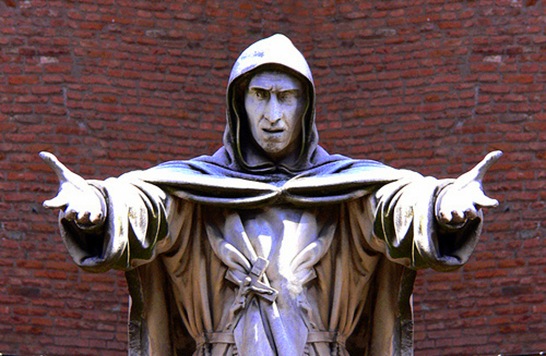“Criticism of ecclesiastical institutions and proposals for church reform,” writes Elisabeth Gleason, “had been persistent themes of Italian religious thought during the first three decades of the sixteenth century.”[1] This criticism was due to several factors including an inadequate resolution to the Conciliar Movement in the Fifth Lateran Council (1511), an abysmal standard of morality by Pope Alexander VI and his Borgia family on whom he had lavished abundant privilege and wealth, the Medici papacies which had made the city of Rome into a veritable haven of humanism, ongoing conflict between the Catholic Emperor, Charles V, and his Pope(s), the popularizing of democratic ideals by public intellectuals such as Erasmus (who visited Italy in the years 1506-09), an effusive dissemination of such ideals by the recently invented printing press, and the distribution of Protestant tracts into Italy that questioned the accuracy of Catholic Church doctrine.
On account of the above-mentioned factors, there was widespread recognition of the need for reform. In the opening address at the Fifth Lateran Council in 1512, for example, the Augustinian Cardinal Egidio da Viterbo (1469-1532) declared: "Men must be changed by religion, not religion by men." This “religious uneasiness,” common to the whole of Europe at the start of the sixteenth century, sent thoughtful Christians to reexamine the roots of their faith. This examination produced a wide range of initiatives aimed at producing spiritual renewal, the form of which differed depending upon region and time period. It is essential to remember the various geographical, political, and economic realities in each region of the peninsula. The notion of a unified Italian nation was at best a theoretical abstraction in the poetry of Dante and Machiavelli. In truth, Italian states were fragmented and often at war among themselves.
One reason for the complexity of the Protestant movement on the peninsula is the fact that it developed amidst numerous other movements. Its origins are significantly indebted to the humanist project of Erasmus. Works such as his Inquisitio de fide and Enchiridion Militis Christiani produced an intellectual climate that encouraged discovery. The ad fontes orientation of Erasmus, which he applied to Christian sources, piqued the interest of his contemporaries, motivating many to take up and read, especially the New Testament letters of Paul.
This meant a renewed focus upon the Bible. Such was true, for instance, of The Benedictines of Santa Giustina of Padua, whose attention to Scripture approached the text-centered approach of Protestants. Investigation and discussion of the Bible, with particular reference to the life of Christ in the gospels, eventually reached beyond the cloisters of professional theologians and into the marketplace. Reading the gospels served as an initial step toward studying the Pauline epistles and eventually discussion about the doctrine of “justification, faith, works, papal power, purgatory, and a whole panoply of other matters theological.” While embryonic in scope, these developments represented a conscious reappropriation of sacred resources against the ignorance, corruption, and superstitious practices of the early sixteenth-century clergy.
During this period, it was increasingly common for Protestant tracts, which questioned Catholic doctrine, to circulate through southern Europe. One reformer, Juan de Valdés, in his Dialogue in Christian Doctrine (1529), for instance, quotes from the works of Luther, Melanchthon, and Oecolampadius. The history of Italian printing narrates the story in which the book-trade provided a “diffusion of writings by northern reformers and the fortunes of works on religious subjects by Italians.” Anne J. Schutte, in her fastidious study of Italian lettere volgari (letters written by famous people in the Italian vernacular during the mid-sixteenth century), demonstrates that Protestant texts popularized Evangelical values beyond clerical circles into the lower social classes.
What was the outcome of this gospel renewal activity? Professor Tony Lane provides a glimpse into the answer when he writes, “An Italian bishop [of the sixteenth century period] lamented that ‘people everywhere, even to the wash-houses of women, spoke about justification and similar matters.”[2] How wonderful it would be if the same could be said of evangelical Christian men and women in our day.
[1] Gleason, Gasparo Contarini, 192.
[2] A.N.S. Lane, Justification by Faith in Catholic-Protestant Dialogue: An Evangelical Assessment. (London: T&T Clark, 2002), 7





